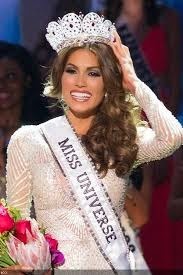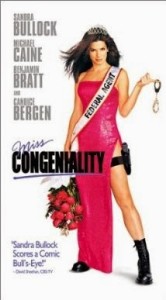Part of the creative process is Discovery. I’m in this phase now, which is when the beginning of a plot swirls in my head. I have a title for my next mystery, so I have to work the murder around it. Thus I’ve made an appointment for a facial. I know, research can be tough but someone’s got to do it. And my Bad Hair Day series is centered around a beauty salon.
Often I’ll start the plotting process with the victim. As shown in my book, Writing the Cozy Mystery, I draw a circle in the center of a paper and put the victim’s name inside. Around that go spokes like on a wheel for each of the suspects. Then I connect the spokes together so it becomes more like a spider’s web, where the suspects relate to each other in some manner.
For now, I know my victim’s basic identity. Her job is what gets her into trouble, and so the suspects develop from among her business associates. Who might want her dead and why leads me to motives. At this point, preliminary research is in order. I need to look up the world surrounding her business and learn more about it.
But that’s not all. I am driven to acquire new knowledge about a subject for each book. What will it be for this one? What issue interests me, or what news article have I filed among my clippings that I might want to pursue? This factor is what propels me forward and underlies the plot. It hasn’t come to me yet for this story.
My victim is co-sponsor of a beauty pageant. I search online and fine headlines like “Top 10 Beauty Pageant Scandals.” Bingo! Before looking these over, I realize I have a problem. Most pageants likely take place over a weekend. How can I get this group of people to stay in the Fort Lauderdale area for a week or two so my hairdresser sleuth, hired to do the contestants’ hairstyles, can ferret out clues?
I’ll deal with that problem later. Meanwhile, I look at the scandals online regarding beauty shows, and nothing strikes me in terms of issues I’d want to pursue. The problems encountered don’t seem worthy of murder. And do I really want to write a whodunit variation of Miss Congeniality?
Hey, what if I do a fashion show instead of a beauty pageant? My last Bad Hair Day mystery, Peril by Ponytail, takes place in October. I could set the new story in December. I’ve done Thanksgiving in Dead Roots but never Hanukah or Christmas. So how about a charity holiday ball with a fashion show? Using a local designer would keep the action in town, and I’ve already done the preliminary research by going backstage at a designer showcase. This will give me the personal angle of Marla and Dalton dealing with the holidays while also picking a charity whose cause I can support. If Marla has a connection to the charitable organization through her friends or relatives, this would give her an added incentive to get involved in solving the murder.
I like this idea. It’s starting to get me excited, whether or not it pans out. At least, it’s a start in the right direction.
So what advice do I have for you based on this experience? When you begin to think about the next story, let ideas flow through your brain. Pick the one that excites you and do your preliminary research. If you find some meaty material, go with it. If not, let the idea float away but keep the story in your mind. Your subconscious will present the next idea. Or thumb through your files and see if one of your clippings or news pieces stimulates a train of thought.
Do you start story development with an issue, a character, or a setting?



Nancy, I enjoyed reading about your creative process. Your version sounds so robust. Mine is more like, I have this splinter of an idea. It’s stuck in my head. I look at it and squeeze it and wish for forceps, but it’s in there, you know?
The message box kicked me out before I was finished! Anyway, I start to get various ideas about the splinter, thinking about where it’s been and how it landed in my head. From there I come up with about 5 plausible motives for the splinter’s demise and then write like the wind until one of the motives wins out. That’s my first draft process…
Sounds like you essentially wing it, Maggie. I have to plot everything out ahead of time. I can’t start writing until I know where I’m going.
I love how you take us through the early stages of your writing process as you’re forming ideas for a cozy mystery, Nancy! An entertaining and informative post – thanks for this! 🙂
Yes, and I’m hoping for more ideas to hit while I’m lying on the table getting a facial tomorrow. The next stage will be looking up fashion shows, associated scandals and possible charitable causes. There’s always my “dirt” file full of motives if necessary.
Interesting post.
“I am driven to inquire new knowledge about a subject for each book.”
I guess you mean acquire?
The parents that enter their children into beauty pageants have always struck me as having issues
Oops, you caught my typo! Yes, I meant acquire. I agree with you about children in pageants. That strikes me as exploitation. But so does any beauty pageant. Aren’t we past objectifying women yet?
I like the way you think Nancy. The bad hair day is a real gem. I come from the beauty pagent part of Alabama and it is a real trip.
I imagine it is so, R.G.
Nancy, thanks for giving us a look at how you work out the plot. Great ideas.
As for your new plot, whether it’s a beauty pageant or a fashion show, (coming from a medical background) I say have an outbreak of a very contagious or dangerous virus. The CDC will quarantine the place, your characters will all be kept in place to simmer and stew, and your hero can have access to all of them.
That would be a good plot if I was writing a thriller but I write whodunits. As in…there’s a murder. Whodunit? However, I wouldn’t be averse to having a medical research charity involved. Still have to think more about the charity angle…if that ends up working out for me.
When I had to write research papers in college, I’d spend half of the semester reading everything I could find that related to my subject, and then the second half culling together the story about the subject that resonated with me. The process felt totally indulgent and not at all research-paper painful. Similar to what you describe here. Good luck with the book!
Thank you, Diane. It’s a vetting process, in a way. Some things work and others don’t. You have to shed the ideas that don’t go anywhere and hang onto the ones that resonate, as you say.
Coming in so late here, I would like to add that my first WIP, which is still IP, just happened all over the place. I didn’t know how to grow a book. Instead I tried the old Mrs. Grundy method of outlining I learned in Jr. High School. Of course, that’s all after-the-fact outlining and nothing like a battle plan or “found” treasure map.
As WIP #1 nears its endpoint—following many major surgeries—I am looking forward to developing a reasonable plotting of the next one—after I’ve found the story, of course.
Thanks for the thought provoking article. My first three novels flowed easily onto the keyboard because I used locales, characters, action, etc. that I knew (fleshed out). For here on out, it’ll be harder and I’ll follow your example.